|
 Secure Site
Secure Site
|
 |
Archive for March, 2012
 Courtesan of Montoya with Zen Monk by Suzuki Harunobo, ca. 1770 People in need of a creative boost should take a long nap, according to new research highlighted by ScienCentral. The researchers found that naps increase people’s ability to solve problems creatively, but only if the nap includes REM, the deep sleep when dreams occur. REM sleep happens only after about an hour of sleeping, so a long nap is recommended. According to researcher Sara Mednick, “If you take a nap with REM sleep, you’re actually going to be boosting your ability to make these new associations in creative ways.” Mednick has tried to put her findings to good use by taking a nap at least three times each week. It is helpful to use the Zen Alarm Clock for a gentle awakening from a nap.
What makes this gentle awakening experience so exquisite is the sound of the natural acoustic chime, which has been tuned to produce the same tones as the tuning forks used by musical therapists. According to the product’s inventor, Steve McIntosh, “once you experience this way of being gradually awakened with beautiful acoustic tones, no other alarm clock will ever do.”
adapted from Utne.com,September 2009 by Bennett Gordon
 Zen Alarm Clocks for a gradual and progressive awakening to a nap, to boost creativity Now & Zen’s Alarm Clock Store
1638 Pearl Street
Boulder, CO 80302
Posted in Chime Alarm Clocks, Japanese Inspired Zen Clocks, Natural Awakening, Now & Zen Alarm Clocks, Progressive Awakening, Sleep Habits, Well-being
 meditating on a rock According to traditional Chinese medicine (TCM), the heart is the emperor of the body—it feeds all systems and rules the mind. The connection between the mind and the heart is more than just metaphysical: In a 2008 study conducted by researchers at the Medical College of Georgia, adolescents who practiced simple breath-awareness meditation for 20 minutes a day—10 minutes in school and 10 minutes at home—for three months experienced significant reductions in blood pressure and resting heart rate. Laurie Steelsmith, ND, a specialist in TCM and author of Natural Choices for Women’s Health (Three Rivers Press, 2005), recommends meditating 20 minutes a day at least four times a week to reap the full benefits of the practice. Or give your heart a mini-vacation by settling in with your favorite soothing CD. Research shows the heart synchronizes its beating to increases and decreases in music tempo. “We often use classical music to help our patients’ heart rate slow to 60 to 70 beats per minute,” says Michelle Cameron, director of healing solutions at the Cleveland Clinic.
The Digital Zen Clock & Chime Timer serves as a countdown and interval timer for yoga, meditation, bodywork, etc.; and it can also be set to chime on the hour as a tool for “mindfulness.”
Digital Zen Clocks feature a “high” and “low” chime strike volume control, which allows you to adjust the sound of the chime to suit your needs. The Digital Zen Clock runs on 2 AA batteries (not included) and can also be plugged in with the included AC jack. The clock includes a lighted digital display (which can be set to be lit full-time when plugged in).
adapted from Natural Solutions Magazine, January 2010 by Kate Hanley
 Natural Chime Meditation Timers in Solid Maple Now & Zen’s Natural Chime Timer Shop
1638 Pearl Street
Boulder, CO 80302
(800) 779-6383
Posted in intention, Meditation Timers, Meditation Tools, mindfulness practice, nature, Well-being, zen, Zen Timers
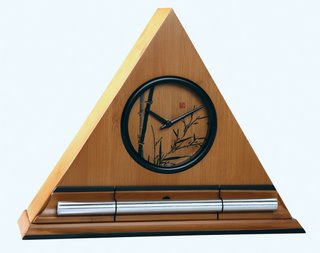 soothing acoustic chime alarm clock by Now & Zen, Inc. Boulder, Colorado—an innovative company has taken one of life’s most unpleasant experiences (being startled awake by your alarm clock early Monday morning), and transformed it into something to actually look forward to. “The Zen Alarm Clock,” uses soothing acoustic chimes that awaken users gently and gradually, making waking up a real pleasure.
Rather than an artificial recorded sound played through a speaker, the Zen Clock features an alloy chime bar similar to a wind chime. When the clock’s alarm is triggered, its chime produces a long-resonating, beautiful acoustic tone reminiscent of a temple gong. Then, as the ring tone gradually fades away, the clock remains silent until it automatically strikes again three minutes later. The frequency of the chime strikes gradually increase over ten-minutes, eventually striking every five seconds, so they are guaranteed to wake up even the heaviest sleeper. This gentle, ten-minute “progressive awakening” leaves users feeling less groggy, and even helps with dream recall.
 soothing chime alarm clock Now & Zen – The Gradual Clock Store
1638 Pearl Street
Boulder, CO 80302
(800) 779-6383
Posted in Bamboo Chime Clocks
 the art and science of a balanced life
The funny thing about balance is that people rarely consider it—until it eludes their grasp.
In both the physical sense and through how we live our lives, balance is often an afterthought. Let’s use standing upright as an example: Typically, the act of standing is so rehearsed, we do not notice how truly amazing this action is. If you watch a child learning to stand, however, or have ever experienced vertigo, you remember that performing this feat is only easy when you have balance.
The act of standing requires the ability to make small corrections, which give the appearance of being centered. When standing still, there is always movement happening; it is a process of give and take.
 Ohara Koson (Shoson). 1877-1945 two carp and white lotus 1933 In physics, balance only occurs when two equal forces are applied in opposite directions. Standing requires movement, but the shifts are small. If you sway a bit to the right, you naturally counter-balance by shifting to the left. It’s these small corrections that keep you centered. Beingout of balance means the correction, or counter-balancing movement, was not effective.
The same is true with life balance. However, many of us fail to make the small corrections in time. Maybe you focus too much on work and now have relationship problems, or spend too much money and are now in debt. Maybe you let your physical fitness go and now face an illness. These big imbalances are very disruptive and can be avoided.
But first, let’s talk about life balance. What is it? Life balance can be identified by feelings such as joy, happiness, confidence, hopefulness, and ease. Life balance is a sense of well-being—and feeling well creates wellness in many ways, such as lowering blood pressure. Achieving balance even improves your ability to manage stress. Remember this if nothing else: Life balance starts with positive feelings. You need to believe you can have the things you want in life, first.
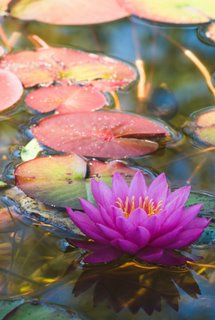 creativity The art of life balance requires creativity. If you push too hard you will miss its subtle rewards. Navigating easily through life requires a sense of curiosity and playfulness, like that of a child. This doesn’t excuse you from taking life seriously, simply that you release the illusion that you can control everything. By exerting control over everything, you
may end up limiting yourself. The art of life balance requires dedicated time for having fun and observing the world around you. You may be surprised at what you find if you do.
Life balance comes from trust, faith, and fun counter-balanced by logic. The science of life balance can be thought of as your logical side. Typically we think of this as planning and scheduling, but it is much more. The science of balance has been studied for millennia. If you look at the Taoist teachings of yin and yang, for example, you will discover that each side of the familiar symbol includes a small circle of the opposite color at the center. Believing that nothing is totally black or white—right or wrong—can help you perceive circumstances in a new way.
Unsure where to start? Here’s an exercise you can do. Take a moment to write down these categories so you can rate them in a moment:
• Career/School
• Finances
• Health
• Significant Other
• Family Life
• Friends
• Community
• Physical Environment
• Other (list anything else that comes to mind)
Next, rate each area of your life according to your level of satisfaction. If you feel completely satisfied, give yourself a rating of 3. Somewhat satisfied, a 2. And not satisfied, a 1.
Look at the areas you rated as a 1. These are the areas that may be creating imbalance in your life. If you feel sad or overwhelmed, please stop for a moment and take a few full, gentle breaths.
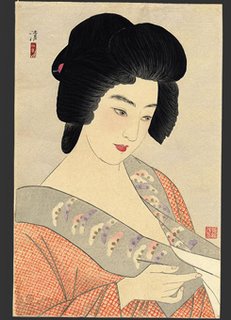 how to find balance in your life The first step to life is creating awareness and the second is centering. You will not create good results in your life if you feel panicked. And remember, creating balance does not mean you have to change anything. Instead maybe take a moment to look at the 3s on your list and feel grateful.
If there are no 3s take a moment to feel grateful anyway. You are here reading this article, which means you are creating an important shift already. Let that be enough for now and enjoy. The important thing to remember is that life balance is a state of ease, so try to connect to these feelings whenever possible. Even if your life feels chaotic, your change begins from within. Close your eyes and visualize the changes you would like to see in your life. This allows you to tap into your creative side. Then open your eyes and start to write down your goals and dreams. When you are ready, come up with a plan to connect these with your logical side. Now that’s balance in action!
Jenny Gallagher is a certified life, wellness and business coach. She is also a registeredyoga teacher and author of Yen Path: Taking Steps Towards What You Want in Life (2011). For more information go to www.jennygallagher.com.
Our Zen Timepiece‘s acoustic 6-inch brass bowl-gong clock is the world’s ultimate alarm clock, practice timer, and “mindfulness bell.”
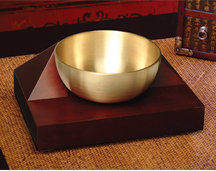 Well-being Chime Alarm Clock and Meditation Timer It fills your environment with beautifully complex tones whenever it strikes. In the morning, its exquisite sounds summon your consciousness into awakening with a series of subtle gongs that provide an elegant beginning to your day. Once you experience the Zen Timepiece’s progressive awakening, you’ll never want to wake up any other way. It also serves as the perfect meditation timer.
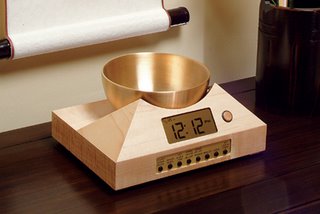 Singing Bowl Alarm Clocks with Real Acoustic Sounds Now & Zen’s Chime Alarm Clock Store
1638 Pearl Street
Boulder, CO 80302
(800) 779-6383
Posted in Meditation Timers, Meditation Tools, mindfulness practice, Well-being
 Sustainable bamboo Zen Timers and Clocks by Now & Zen Inc. Boulder Colorado-based Now & Zen, Inc., maker of the world famous Zen Alarm Clock®, has recently launched a new line of sustainable bamboo Zen Clocks. The decorative, triangle-shaped clocks feature a long-resonating acoustic chime that wakes users gradually over 10 minutes. When the alarm is triggered the clock strikes its chime just once, then it strikes again in 3 minutes … then in 3 minutes … then 1 minute … providing a pre-programmed sequence of chimes that makes waking up a graceful experience.
 Sustainable bamboo Canes Growing in the Wild Now & Zen introduced its original Zen Alarm Clock in 1996, but according to company founder and president, Steve McIntosh, these sustainable bamboo clocks are the most beautiful of all their designs. “I’m really proud of the form, function, and sustainability profile of our new bamboo Zen Alarm Clock, it’s our greenest product yet,” said McIntosh. The bamboo Zen Clock is available in four different dial face choices, with each dial silkscreened directly on bamboo veneer for an integrated, natural look. The new sustainable bamboo dial faces include one with contemporary numbers, one with simple modern lines, one with the Japanese character for “dream,” and a “bamboo leaf and stalk motif” inspired by Chinese ink painting.
 Tehya with Steve McIntosh, Inventor of Zen Alarm Clocks in Japan The wood used in all Now & Zen products is sustainably grown on tree farms, and the company operates according to a strict policy of environmental sustainability for all its operations. However, the introduction of the company’s sustainable bamboo line sets a new standard for sustainability. Bamboo, which is a species of grass, is a very “green” material for making clock bodies. Compared to a hardwood forest the same size, sustainable bamboo produces 30% more oxygen and 20 times the biomass yield. Bamboo can be harvested annually after the first 5 to 7 years without replanting, compared to 25 to 50 years for trees, which then need to be replanted in bare soil. Moreover, sustainable bamboo is the fastest growing woody plant on the planet, and it’s qualities of oxygen production, carbon sequestering, and water and soil retention make it one of the world’s most sustainable commodities as well.
 - Sustainable Bamboo Digital Zen Alarm Clock by Now & Zen
The Digital Zen Alarm Clock can be used simply as a pleasant way to wake up. However, the highly resonant sound of the pure tone acoustic chime and its unique computerized progression, as well as its countdown and repeat functions, allow the clock to be used in dreamwork, personal affirmations, meditation, yoga, and for group meetings.
 Now & Zen - The Zen Alarm Clock Shop Now & Zen – The Zen Alarm Clock Shop
1638 Pearl St.
Boulder, CO 80302
Posted in Now & Zen Alarm Clocks
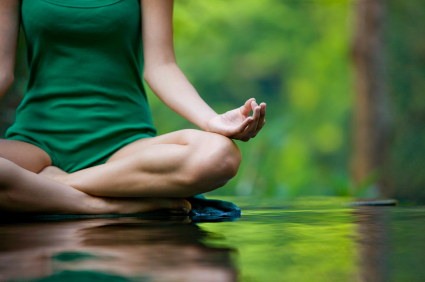 meditation 101
Meditation is often something thought of as a practice reserved for monks or the spiritual elite. Happily, this is far from the truth.
It’s been said that there are many paths up the mountain of meditation. We are living in a time where the mountain is closer and more accessible than it’s ever been. With the presence of the Internet and the ever-expanding global village, we have access to many paths that were far beyond reach only years ago. The seeker today has access to an unlimited wealth of information. With the click of the mouse you can access meditation techniques that are commonplace in remote parts of the world.
A really cool thing about living in our time is science and spirituality finding common ground. Today we have the science to quantify the benefits of meditation that the practitioner previously had to take on faith alone. Western medicine has traditionally shied away from mediation as a “prescription,” but now that there is concrete, scientific evidence proving the benefits of meditation, we are seeing the mainstream medical community look to mediation as a viable treatment option for a number of conditions and illnesses.
Let’s take a quick look at what science has shown us about our brainwaves: Every day, your brain is constantly operating on various wavelengths. While you are awake and interacting with others, you are in the Beta wavelength, at about 14 to 30 cycles per second (or hertz). When you get into the Alpha waves, you are still alert and paying attention, but get into a relaxed and calm state while your brain is at 9 to 13 hertz. When you get even more relaxed—and sometimes zoned out—you are in the Theta waves at about 4 to 8 hertz; we call this the meditative state. When you go further into a deep sleep, you are in the Delta waves at 1 to 3 hertz.
When it comes to dealing with stress, in many ways our brain is operating on the same basic circuitry as our ancient ancestors the cavemen, with a primal “fight, flight, or freeze” reaction to stress/ danger. Our caveman brain can be triggered by stress—even perceived stress that may or may not be real—with a primal: “Oh my God! I’m being chased by a saber-toothed tiger!” Cortisol and adrenaline are then pumped into our systems, we experience a rise in glucose levels, and we are able to flee or fight the danger. If we take flight or fight, our bodies break down those chemicals— this is the original design of the flight response. When we are stuck in this position, all of our rest, digest, repair, and reproductive systems take a back seat to the emergency.
Unfortunately, the reality of our modern lifestyle is that most of us are sitting at a desk being chased by something like a deadline or the perceived danger of job loss (not by an actual saber toothed tiger), but our brains react much the same way and those chemicals in our bodies turn into figurative shards of glass when they’re not being burned off by exercise.
So, how do we dissolve those shards and deal with the stress? There are many ways to do this, while exercise is one of the best ways to burn off the chemicals once they are unleashed, meditation is one of best preemptive methods for staying centered and being able to ask ourselves “Is this really a saber-tooth tiger chasing me?” We’ll talk later about slowing down our thoughts, but first, let’s look at how that meditative state in the Alpha/Theta brainwave pattern brings our bodies and some of those chemicals back into balance.
 meditation When you meditate, you body releases DHEA (a chemical that promotes relaxation, memory, and reduces cardiovascular disease risk), serotonin levels rise and your blood pressure starts todrop. In meditation you are completely awake and alert, but at the same time still and quiet, coming into full consciousness of the present moment. Meditation brings us to a depth within ourselves where we can access our inner compass and our deep, inner calm: that place of peace and awareness we alreadyhave.
Take this metaphor by David Fontana, PhD: The sky itself is our true nature and true self, but there are clouds in the sky obscuring our view. The clouds represent our “monkey mind” or our constant mental chatter. In our normal Beta state, the clouds of our thoughts, worries, hopes, and fears are continually obscuring our view, and it is all but impossible to see the sky for what it is. Meditation is our tool to clear away the clouds and experience the vastness of the sky, and the vastness of our true being.
How to Meditate
One of the first things you want to do is decide on a place, time, and position for meditation. Ask yourself: What’s the best time of day for me? What is my commitment level? Can I make a commitment to do it at this time, every day? Will it be for 10 minutes, 20 minutes? How long will I commit to this? Will it be 10 days, 30 days, 60 days?
Write down your answers and journal about it. Then mark your calendar and note how you felt on the days you meditated. Writing these things down will keep you more accountable and set you up for continued success.
Find the spot you’re going to meditate in, but make sure it’s not a spot that you watch television in, or do anything else. When you train your body to recognize that “this is where I meditate,” you are supporting your meditation with a physical habit that your body recognizes.
Also think of bells and smells. Find the things that make your space sacred, create an ambiance that signifies that this is your space for meditation. Ask yourself: Do I need sound? Do I need candles or incense? Start with what you’re attracted to and find those things that resonate with you.
Once you’ve found your place, be sure to sit with your head, neck, and spine in alignment. In this position, you minimize the stress level for your body because it doesn’t have to work as hard to maintain balance. This position also allows you to be open to relaxation and minimizes your chances of falling asleep.
 how to meditate Now that you’ve found the place and time to meditate, let’s talk about the nature of your mind. It has never been trained to meditate and it’s natural that it will try to rebel. St. Teresa of Ávela said the mind before meditation is like a wild horse. When you decide to meditate, the mind attempts to buck you off and do everything it possibly can to keep you from “breaking” it. If you stay on it until you break it, that horse (your mind in meditation) will do you a great service.
I’ve found the major roadblocks for people who are just beginning a meditation practice tend to fall into two categories: those that think they need to be perfect at meditation and give up because they’ miss a day or two, or feel they should have the mind of a monk with no distractions after just a few attempts. Or there are those on the opposite end of the spectrum who are sporadic about their practice and wonder why the benefits haven’t shown themselves. So when you begin meditation, expect that your mind is going to be like an untrained horse.
I find it’s best to set yourself up for success by starting with a short, 10- minute meditation. Meditating can be overwhelming for those who start with 30-minute meditations (or more), because the wild, untrained horse of your mind can be bucking and challenging you the entire time. Ten minutes is enough for people to start training
themselves for meditation and feeling a little bit of success—like it’s working.
Think of meditation like exercise: You wouldn’t expect yourself to go into a gym and lift 150 pounds on your first try. You have to start with 10 pounds first and train up to it. It’s the same with meditation, and the 10-minute mark seems to be a great starting point. When you first start to meditate, your brain usually goes off in different directions: to your grocery list or reminding you that you need to stop at the gas station on the way home. It’s a typical reaction for the “critic” in you to say “Oh no, I’m not meditating! I knew I couldn’t do this.” Instead of giving up, bring yourself back to center by focusing on your breath. At this point, you’re already in the driver’s seat of consciousness or you wouldn’t have noticed that you were distracted. Each time you catch yourself drifting off and bring yourself back to center, you are developing a muscle in your mind. Just like any other muscle, it needs to be trained, and this muscle will benefit you in countless ways.
Once you are able to reach this meditative state, you become the master of your mind (instead of a slave to it) and are able to push away the clouds of your monkey mind.
Many Ways to Meditate
Again, I bring us back to the parallel of exercise: Once you decide to embark on an exercise program, there are many different activities you can choose from and many classes you can take (aerobics, yoga, swimming, weight lifting, and jogging to name a few). You may try many until you find one that fits. Embark upon your mediation practice in much the same way: Try different types of meditation until you find one that resonates with you and that you feel you can practice for a time.
There are many different paths up the mountain of meditation within the great traditions of Buddhism, Taoism, Hinduism, Sufi, and Kabbalah (amongst many others), and the newer western traditions, as well. The list below is by no means comprehensive, but rather a quick snapshot to get you thinking about where to begin your meditation journey. In addition to seeking out places of worship, you can also find many great, guided meditations from our modern masters.
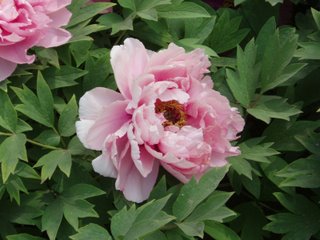 guided meditation Guided meditation: This can be a visual or an auditory meditation that can inspire a set of images, feelings, smells, or sounds. This is a great place to start it helps to give you a place of focus and you can follow the image through, rather than trying to simply come to silence and stay there. That is sometimes too abstract of an idea for some people to grasp. It is also very helpful for those whose monkey mind likes to go crazy.
Mindfulness meditation: This style, derived from the Buddhist discipline called vipassana, is the practice of staying in the present and being in the seat of consciousness (remember the driver’s seat from before?), and being the observer of the thoughts and pictures that pass through your mind. The goal is allowing those thoughts pass without being attached to them.
Transcendental Meditation™: This style, made popular by Maharishi Mahesh Yogi, gives you an individual mantra (or “meaningless phrase”) that serves as the vehicle to get you to that place of deep peace and meditation.
Moving Meditation: For those that find it very difficult to sit still, there are forms of meditation that involve movement. These can be tai chi, qi gong, or yoga asanas. Both tai chi and qi gong combine slow, purposeful movement while focusing on a conscious direction of energy flow throughout the body.
What benefits can I get from meditation?
Benefits may seem slow to come and are subtle at first, but are long lasting and very effective. Just like exercise, you’re not going to see the changes in your body right away, but if you keep with it, you know you will reap the benefits. It’s the same with meditation.
There are many benefits to practicing meditation, many of which have been scientifically documented and studied. In future issues of Natural Solutions, we will cover some of these benefits and specific meditation techniques. No matter which technique you choose to follow, you can expect to receive the basic benefits listed below.
Slowing Down. One of the immediate benefits experienced through meditation is that you will be able to slow down and be conscious of your thoughts. Many times we assume the thoughts in our mind are real because we perceive and experience them. When we slow down our thoughts (especially those of stress and danger) and we look at our self-talk while we are flipping out, we are using that muscle in our mind we developed that allows us to be in the driver’s seat and examine our thoughts. Challenge them and ask yourself if those thoughts are helpful to you.
 how to meditate
Responding to Life. After meditating for a while, you start to respond instead of reacting to life. The term “react” is a monkey-mind or knee-jerk reaction. To “respond” is to actually think about act consciously. Practicing meditation puts you in a position where you can take a breath, and actually respond to people and situations, especially those that are stressful or challenging.
In Tune. A long-term benefit of meditation is that you are able to be in line with yourself and the world around you. You are way more alert and in a more peaceful state of being. Not to mention that you will have lower blood pressure, reduced risk of cardiovascular disease by increasing circulation, reduced insulin resistance, reduced mortality rates, and reduced heart-rate variability. In some ways, it’s the perfect antidote to the amount of stress we have in our daily lives.
Jill Englund has a Bachelor of Science degree in metaphysics, and for the last ten years has helped organizations and individuals achieve their goals through guided imagery, creative visualization, and meditation in Minneapolis, Minnesota. Her guided mediations can be found at steps2wellbeing.com.
Although meditation can be done in almost any context, practitioners usually employ a quiet, tranquil space, a meditation cushion or bench, and some kind of timing device to time the meditation session. Ideally, the more these accoutrements can be integrated the better. Thus, it is conducive to a satisfying meditation practice to have a timer or clock that is tranquil and beautiful. Using a kitchen timer or beeper watch is less than ideal. And it was with these considerations in mind that we designed our digital Zen Alarm Clock and practice timer. This unique “Zen Clock” features a long-resonating acoustic chime that brings the meditation session to a gradual close, preserving the environment of stillness while also acting as an effective time signal. The Digital Zen Clock can be programmed to chime at the end of the meditation session or periodically throughout the session as a kind of sonic yantra. The beauty and functionality of the Zen Clock/Timer makes it a meditation tool that can actually help you “make time” for meditation in your life.
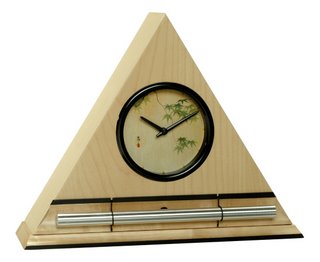 meditation timers and tools by Now & Zen, Inc. Now & Zen’s Acoustic Meditation Timer Shop
1638 Pearl St.
Boulder, CO 80302
(800) 779-6383
Posted in Meditation Timers, Meditation Tools, mindfulness practice
 calm your mind with a mindfulness practice Calm Your Mind
Most stress-reduction techniques will help relieve moderate anxiety, says Edmund J. Bourne, Ph.D., a psychologist practicing in Hawaii and California and the author of Natural Relief for Anxiety (New Harbinger Publications, 2004). This can include abdominal breathing, yoga, tai chi, guided visualizations, or even just taking a break two or three times every day to relax, take a walk, or imagine yourself in a peaceful place. Set your Zen Meditation Timer anyplace or anytime for just 5 minutes a day so that you can calm your mind.
Mindfulness-based meditation, which has proved especially helpful in reducing anxiety, is now being taught in many hospitals and health centers across the country. Studies have found that, among other benefits, it can lower breathing rate, reduce levels of the stress hormone cortisol, and increase activity in the left frontal area of the brain, which is associated with a positive mental state and lowered anxiety levels. In fact, a recent Canadian study of cancer patients who participated in a mindfulness-based stress-reduction program found that levels of cortisol and pro-inflammatory chemicals continued to drop for six months to a year afterward.
Mindfulness practice also helps you notice your thoughts and feelings without judging them. “Mindfulness means accepting whatever you may notice around you and not trying to analyze it,” Duke University’s Brantley says.
After she left New York for North Carolina, Miller discovered the Duke Mindfulness program and found it to be invaluable. She attended group sessions and learned how to practice the meditations. The time she spent paying attention to her breathing or visualizing something peaceful improved her concentration at work and allowed her to reduce her dose of anti-anxiety medication.
The basics of the meditation (listening to your breath or paying specific attention to various parts of your body) are simple and can be learned from books—such as Full Catastrophe Living (Delta, 1990) and Wherever You Go, There You Are: Mindfulness Meditation in Everyday Life (Hyperion, 2005), both by Jon Kabat-Zinn, Ph.D., founding director of the Stress Reduction Clinic at the University of Massachusetts Memorial Medical Center. “The important thing is to make mindful practice a part of your life so you’ll be prepared when a stressful situation arises,” Brantley says.
Our Zen Timepiece’s acoustic 6-inch brass bowl-gong Meditation Timer & Clock is the world’s ultimate alarm clock, practice timer, and “mindfulness bell.”
adapted from Natural Solutions Magazine by Ben Kallen
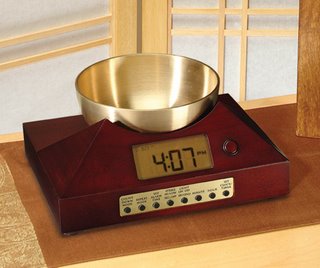 Zen Timepiece with Brass Singing Bowl, a Meditation timer to Calm your Mind Now & Zen’s Bowl-Gong Timer Store
1638 Pearl Street
Boulder, CO 80302
(800) 779-6383
Posted in Bamboo Chime Clocks, Chime Alarm Clocks, intention, Meditation Timers, Meditation Tools, mindfulness practice, yoga, Yoga Timer, Yoga Timers by Now & Zen, Zen Timers
 how knowing your dosha can help you avoid sleepless nights Sleep is natural to life—just look at how well babies do it—and any problems we encounter should have a natural solution. Our inner sleep rhythm should connect to the rhythms of nature, or more specifically of daylight. Normally, as daylight fades, the body’s biological clock triggers the release of melatonin from the pineal gland, making us feel sleepy. The onset of morning light triggers a drop in melatonin, causing us to wake up.
Yet if sleep is so natural, why do an estimated 75 percent of Americans develop sleep problems? Probably because our lifestyles have become so un-natural. Late nights, evening computer- and cell-phone use, and sleeping late all alter this natural pattern of melatonin secretion. Add alcohol and caffeine consumption and late-evening meals to those years of cumulative abuse, and you end up with chronic sleep problems. To top it off, melatonin production tends to decrease as we age, further reducing the quality of our sleep.
Ayurveda considers sleep to be one of three key pillars of health. It recognizes the role of biological rhythms and identifies six time periods throughout the day that affect sleep by affecting our doshas—the three fundamental processes that guide our body’s functioning. The doshas include mind and movement (vata), metabolism (pitta), and structure (kapha). To improve sleep, ayurveda suggests going to bed before 10 p.m., during the cycle dominated by the heavy, slow-moving kapha dosha, when you naturally feel more mellow and sleepy. If you go to bed then, you’ll fall asleep easier and your sleep will be deeper.
The other pivotal point in the daily cycle occurs at 6 a.m. If you wake up before then, during the time of the morning dominated by quick moving vata dosha, you should have more clarity and dynamism.
As you and your husband illustrate, not everyone suffers from the same sleep problem. If your mind is whirling, your body tense, and you can’t fall asleep, chances are you have a dominant vata dosha. Your husband’s sleep problem on the other hand, waking up between 2 a.m. and 4 a.m., usually stems from a disturbance in the hot pitta dosha. People who sleep eight hours but still feel exhausted commonly have an excess of the slow, heavy kapha dosha. In each case, it’s important to balance the dominant tendency with diet and lifestyle choices.
Ayurvedic Sleep Aids
If you have trouble falling asleep (vata)
•Go to bed before 10 p.m., earlier in winter.
•Rub warm olive oil on your head and feet right before bed to calm an overactive mind.
•Avoid caffeine, raw foods, crackers, cold cereal, and other dry, light foods that aggravate vata dosha.
•Avoid TV, intense phone conversations, and exercise after 9 p.m.
•Choose quiet evening activities to wind down, such as washing dishes, folding clothes, and other simple tasks.
If you wake up between 2 a.m. to 4 a.m. (pitta)
•Avoid computer use and other work at night. Organize a to-do list to get a head start on the morning and settle your mind before bed.
•Avoid arguments or controversial discussions at night.
•Take an evening walk to clear your brain and cool your body.
•Avoid spicy or fried foods at night.
•Eat a juicy pear every day to cool the hot pitta dosha.
•Drink warm milk flavored with cooling organic rose syrup before bed.
•Rub your head and feet with coconut oil before bed.
If you feel exhausted after a good night’s sleep (kapha)
•Eat a light soup with whole-grain crackers or steamed vegetables for your evening meal.
•Flavor your food with digestion-stimulating spices, such as fresh ginger, cumin, and black pepper.
•Avoid meat, cheese, potatoes, and heavy desserts at supper, as these tend to clog the tissues, promoting snoring, apnea, stiffness, and morning lethargy.
•Make an effort to get up before 6 a.m.
•Exercise daily, if possible during the morning kapha cycle between 6 a.m. and 10 a.m.
Our Zen Timepiece’s acoustic 6-inch brass bowl-gong clock is the world’s ultimate alarm clock, practice timer, and “mindfulness bell.”
 Singing Bowl Clock - Gradual Clock - with Progressive Gongs
It fills your environment with beautifully complex tones whenever it strikes. In the morning, its exquisite sounds summon your consciousness into awakening with a series of subtle gongs that provide an elegant beginning to your day. Once you experience the Zen Timepiece’s progressive awakening, you’ll never want to wake up any other way. It also serves as the perfect meditation timer. Available in 5 wood styles, including bamboo.
adapted from Natural Solutions Magazine, September 2006 by Nancy Lonsdorf
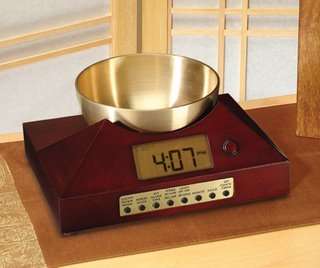 Tibetan Chime Clock with Brass Bowl Gong Now & Zen’s Gradual Clocks
1638 Pearl Street
Boulder, CO 80302
(800) 779-6383
Posted in Now & Zen Alarm Clocks, sleep, Sleep Habits
 meditating makes you happier A few years back, the notion that meditation could bring bliss was something only a swami might swallow. Today it’s an idea that rings true to the ever-increasing numbers of people—from Madonna and Tiger Woods to thousands of ordinary Janes and Joes—who are making meditation a part of their everyday lives.
For years, studies have suggested that meditating can ease chronic pain, lower blood pressure, and reduce anxiety. But University of Wisconsin researchers recently broke new ground, uncovering physical evidence that it may actually make us happier.
A group of stressed-out employees at a biotech company was taught mindfulness meditation and was asked to meditate at home for an hour a day, six days a week, for eight weeks. The researchers measured electrical activity in the volunteers’ brains at the beginning and end of the experiment, and again four months later.
Those who meditated had more activity in the area of their brains linked to positive emotions. “These people weren’t meditating for thousands of hours like monks do,” says Saki Santorelli, executive director of the Center for Mindfulness at the University of Massachusetts Medical School in Worcester and one of the study’s coauthors. “The study suggests that everyday people are capable of altering their brain function in a positive direction.”
The next step on the research agenda, says Santorelli, is to better define and measure just what mindfulness is, so as to understand more about how it affects the mind and body. Scientists are also looking at how meditation might help some serious conditions, including prostate cancer, asthma, and menopausal symptoms.
What you can do: All it takes to reset your stress-o-meter is ten minutes a day of quiet. To start, set a chime timer (Now & Zen $199.95), sit comfortably, and soften your gaze. Since your breath is always with you, it’s a natural place to focus your attention. Don’t get wrapped up in controlling it; instead, just observe it. Each time your attention wanders, gently bring it back to the steady flow of air in and out of your lungs. If it helps to count the breaths, go for it. If not, just focus on breathing. Believe us—you’ll be healthier and happier.
adapted from Natural Solutions Magazine, January 2005 by Catherine Guthrie
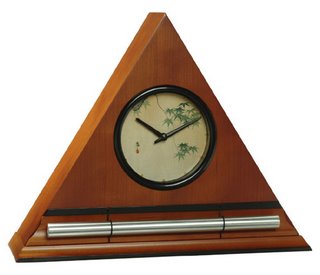 Chime Alarm Clock & Meditation Timers - Progressive Wake-Up Clock with Natural Acoustic Chime Now & Zen’s Clock & Timer Shop
1638 Pearl Sreet
Boulder, CO 80302
(800) 779-6383
Posted in Bamboo Chime Clocks, intention, Meditation Timers, Meditation Tools, mindfulness practice, Well-being, yoga, Zen Timers
 Inner Peace
by Shyalpa Tenzin Rinpoche
It is a misunderstanding to think that the practice of meditation is merely a method for relieving stress and achieving peace for oneself, alone.
In Buddhist tradition, the act of practicing meditation should be approached as a means to benefit others. In the same way, the momentum that grows out of this practice should also be dedicated to the welfare of all beings. Each time you sit down to meditate, make your practice an offering for all beings. Recognize that everyone is looking for ways to find happiness just as you are. Meditation is a means to this end. Sustained meditation practice will bring you joy, and a joyful mind will naturally benefit others. Resolve to meditate with this unselfish attitude.
When we begin meditation, we should first learn how to focus. Some discipline is required in order to be attentive in the moment and experience it fully. Most of the time, we are unable to focus our attention and are easily distracted. Our minds wander, and we are easily mesmerized by our perceptions and thoughts. We have a difficult time remaining focused.
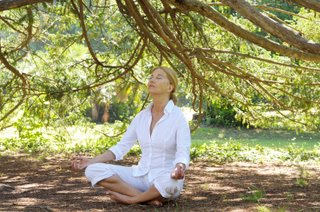 inner balance There are many ways to practice meditation. Let’s explore one approach: Sit up straight. When you begin, breathe naturally. Slowly settle into your breathing by counting the in and out movement of your breath 21 times. Touch the tip of your tongue lightly to the roof of your mouth. If you become drowsy, your tongue will drop down and rouse you from your slumber. Raise your tongue to the roof of your mouth again and concentrate.
If possible, sit with your legs crossed, keep your eyes open, and look straight ahead, beyond the tip of your nose. I would advise you not to close your eyes. If you were to suddenly encounter a tiger in the jungle and were overcome with fear, closing your eyes would not make the tiger run away. Similarly, when you meditate, closing your eyes will not make your distracting thoughts and feelings disappear. You will be alert and prepared to face any challenge when you keep your eyes open. You may think you can meditate more effectively with your eyes closed, but most likely, you are not meditating better, you are sleeping better.
Once you have adjusted your body and settled into your breathing, focus on a specific object, such as the form of the Buddha. This could be an actual statue or an image visualized in the mind’s eye. You could select one aspect, such as the Buddha’s gentle eyes or his golden color. When you notice that your mind has wandered away from its focal point, gently bring it back. If you find yourself thinking about your stock portfolio or that you forgot to turn on the dishwasher, return your attention to the Buddha’s image. The value of your stock portfolio is a mundane matter and your dirty dishes can wait. The mind is running around like a restless monkey all the time. Obviously, this practice can be quite challenging. Observe how long you can hold the object of your attention without wandering. If you can hold your attention steady for five minutes, you are a great meditator already! Most likely, you will lose your focus, jumping from one thought to the next, like a monkey leaping from tree to tree. Staying with the object without drifting away is very difficult; it will take all of your attention and resolve. Throughout your day, you can practice this meditation technique whenever you have some free time.
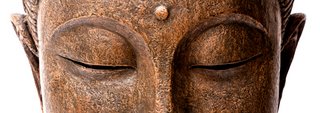 Buddha Practice meditation for whatever length of time you wish. However, in the beginning, practice for short periods, perhaps just five minutes. After meditating for five minutes, you might feel that you are struggling with your mind. If so, relax and tell yourself, “You spoiled brat, go wherever you like!” Let your mind wander as far as Paris, New York, or Shanghai. You can move your body, stretch, dance, or go a little crazy. Once you feel refreshed, return to your meditation again for five more minutes. Proceed like this—concentrating and then relaxing—for perhaps half an hour to an hour. Practice for whatever length of time you find comfortable, without overexerting yourself. Maintaining unwavering attention for five minutes is much better than getting lost in distraction for five hours.
This basic practice of focusing attention is important, even for the most advanced practitioners. If you allow a glass full of muddy water to sit undisturbed, the dirt will settle to the bottom, leaving a glass of pure water. Practicing this simple technique of focusing and restoring your attention when your mind wanders will pacify your restless thoughts. It will calm your mind, and with sustained practice, you will experience lucidity and pure presence.
 meditation When you practice meditation, the trials and tribulations—the highs and lows—of your day-to-day life will not disturb you too much, since your body and mind will be more relaxed. There will be a more intimate connection between your meditation practice and whatever comes up in your life. Even if chaotic or fearsome events turn your world upside-down, you will have more space and less stress. If your life swerves off the road and crashes, the fruits of your practice will act like an airbag, buffering you against serious injury. You will have the strength and clarity to master challenging situations.
Practice by focusing and holding your attention. If you cannot discipline yourself in this way, you could easily find yourself behaving like a spoiled and pampered child who feels helpless when confronted with a challenging situation.
When you develop the capacity to be present, you will respond competently, no matter what the circumstances.
Endeavor to practice some form of meditation each day. Even if you are transacting million-dollar business deals, this will pale in comparison to the rewards of a regular meditation practice. You can live without a milliondollar deal, but you cannot live without inner peace and well-being. So be good to yourself. Make a profound deal with yourself to practice every day. Set aside a little time for meditation, and then gradually spend more and more time practicing. In this way, the truth of the teachings will unfold within the depths of your heart. If you allow these teachings to remain only in your head, you could carelessly misuse the rest of your precious human life. This is not a practice for beginners only. Everyone must master this discipline before they can proceed further in their practice.
After meditating, rejoice and dedicate the fruits of your practice to all beings. With joy, rest in a sublime state. Make this aspiration:
“Whatever benefit I have gained from this practice, may the residual effects last for many days, years, and lifetimes. May everyone, including myself, benefit from the wisdom and clarity accumulated in this practice, until all beings attain enlightenment. Whatever merit I have gained, I dedicate it for the welfare of all sentient beings.”
By making this dedication, you will preserve this positive energy, and your practice will grow stronger in the future.
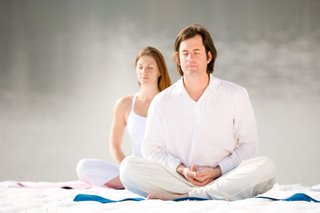 develop a mindfulness practice You can draw on this energy for the dual benefit of yourself and others. In the Buddhist tradition, there are three sublime practices:
The first sublime practice is the generation of a compassionate and loving heart, also known as pure intention. We begin each activity with the positive intention that our action will be of benefit to others.
The second sublime practice is the activity or practice itself, which we do mindfully, while remaining in the natural state, free from distraction.
The third sublime practice is the dedication of merit. Merit refers to the wholesome and positive momentum that grows from our practice. We dedicate our most precious essence and all the positive energy that we have accumulated from our practice to the welfare of all beings.
Apply these three sublime practices in all of your activities, even something as simple as drinking a cup of tea. Prepare your tea while generating a compassionate heart, the pure intention to benefit all sentient beings. This is the first practice. Then drink the cup of tea with complete mindfulness. This is the second practice and the core of the three practices. After your last sip, dedicate the enjoyment of your drink for all beings, and pray that they may be liberated from suffering and awaken to enlightenment.
The rays of the sun provide warmth for all creatures without discrimination. We dedicate the virtue of every positive action to the benefit of all beings. In this tradition, we do not hold on to the merit that we have accumulated for our own benefit alone, but instead we dedicate this positive energy so that someday the enlightened qualities of every being will manifest. Finally, the perfect dedication is to dissolve your merit in the unconditional state.
 finding inner balance In this way, simply drinking a cup of tea becomes genuine meditation because of the three sublime practices. Always insure that these practices are inseparable from whatever you do. The first and last are quite straightforward. In the case of the second sublime practice, you have a specific target. For instance, if your activity is meditation on the breath, follow your breath attentively, and at the same time be mindful of its ephemeral quality. The three sublime practices are the best way to elevate your thinking and walk with dignity on the path of awakening.
The goal of our practice is to free ourselves from stress and suffering. We cannot actualize this freedom using a purely intellectual approach. We need to experience these teachings directly and embody them in our lives. This is why I strongly recommend the practice of meditation.
As beginners, we must embrace the practice of meditation. Even if the discipline of meditation does not come easily, we should endeavor to practice. We have to tame our neuroses and pacify our restless minds.
Steady discipline, combined with joyful effort, is the best way to respect and care for yourself. As your practice progresses, you will begin to reap the rewards. You will carry yourself in a majestic way and experience the regal qualities of your wakeful nature. Like a king in command of his subjects, you will master your mind and emotions.
Every moment is a new moment, so we need a fresh approach to meditation that can be practiced by everyone, anywhere in the world. Our meditation will be pristine when we recollect, with an open heart, the basic goodness in all beings. There is no time to be narrowminded or territorial, as life is too precious to waste. We should not spoil a single moment with an unwholesome thought. This dynamic form of meditation can be practiced nonstop, so that living itself becomes meditation.
Moment-to-moment awareness is the supreme form of meditation. All other methods of meditation are steps that lead us toward this all-pervasive awareness. Recognizing the essence of one’s mind and learning to remain in this essence is true meditation. In Tibetan, meditation means “getting used to.” We could say that meditation is not the goal, but a tool that helps us discover or “get used to” the true nature of mind. Once you realize the truth, you no longer need the tool. When resting in the mind’s nature, there is nothing left to meditate on because the mind is no longer distracted! There is nothing more to grow accustomed to. Nonmeditation is the ultimate meditation. Whatever comes, you are capable of handling it because everything is self-liberated as it arises.
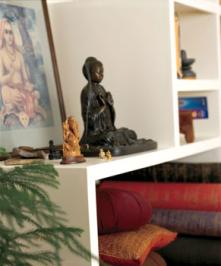 sacred meditation altar If you must have a quiet and secluded place to meditate, your practice is still ordinary. However, with moment-to-moment awareness we can manage any situation. This is what we need the most because life is often chaotic and challenging. We have to survive and navigate the strains and stresses of everyday life. Buddhist practice is not simply a matter of reciting mantras, chanting prayers, and quietly meditating. True practice means learning to handle every situation skillfully.
Whatever you are doing, do it comfortably. Proceed in a relaxed and natural manner. You will experience thoughts arising one after the other. A thought comes and it goes. When you are alert and aware, you will not get lost in your thoughts. It will be clear that you are not your thoughts and that your thoughts do not define you. Thoughts are like the flight of a bird through the sky: the path of the bird leaves no trace. Each thought has no dwelling place or destination. When you train this way, the “possessor” of these thoughts will eventually disappear. At this point, there will be no one to suffer or experience any torment. This is moment-to-moment awareness and the perfection of nonmeditation.
Adapted from the book Living Fully: Finding Joy in Every Breath ©2012 by Shyalpa Tenzin Rinpoche. Printed with permission from New World Library.
Although meditation can be done in almost any context, practitioners usually employ a quiet, tranquil space, a meditation cushion or bench, and some kind of timing device to time the meditation session. Ideally, the more these accoutrements can be integrated the better. Thus, it is conducive to a satisfying meditation practice to have a timer or clock that is tranquil and beautiful. Using a kitchen timer or beeper watch is less than ideal. And it was with these considerations in mind that we designed our digital Zen Alarm Clock and practice timer. This unique “Zen Clock” features a long-resonating acoustic chime that brings the meditation session to a gradual close, preserving the environment of stillness while also acting as an effective time signal.
 relaxing chime alarm clocks by Now & Zen Now & Zen’s Meditation Timer Store
1638 Pearl St.
Boulder, CO 80302
(800) 779-6383
Posted in Meditation Timers, Meditation Tools, mindfulness practice
« Previous Page — « Previous Entries
Next Entries » — Next Page »
|
|
|
|